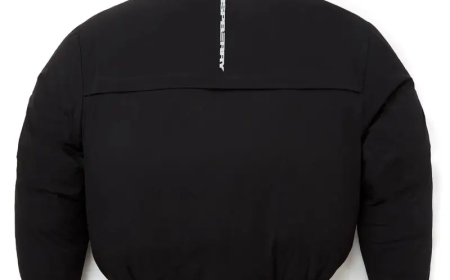The Role of Voice Coils in Subwoofer Performance: Single vs Dual Explained

When it comes to building a high-performing car audio system, many enthusiasts focus on wattage, size, and brandbut one technical element thats just as important is the voice coil configuration of your subwoofer. Whether you're chasing clean daily bass or preparing for SPL competitions, understanding the difference between single voice coil (SVC) and dual voice coil (DVC) subwoofers is crucial for proper wiring, power distribution, and sound performance.
In this guide, we'll explain the role voice coils play in subwoofer performance, how SVC and DVC options differ, and how to choose the right one for your setup. We'll also take a look at how full-range speakers like the DS18 PRO-ZT69 fit into high-output systems where coil performance and compatibility still matter.
What Is a Voice Coil?
At the heart of every subwoofer is a voice coila tightly wound wire loop that moves in response to the electromagnetic field generated by your amplifier. This movement causes the cone to vibrate, producing low-frequency sound waves (bass).
The quality, size, and configuration of a voice coil directly impact:
-
Power handling
-
Heat dissipation
-
Efficiency
-
Wiring flexibility
The most common configurations are:
-
Single Voice Coil (SVC)
-
Dual Voice Coil (DVC)
Each has its own advantages depending on the application and amplifier compatibility.
Single Voice Coil (SVC) Subwoofers
? Structure:
An SVC sub has one voice coil attached to the speaker cone with two terminal leadsone positive and one negative.
? Pros:
-
Simpler to wire
-
Usually less expensive
-
Great for basic setups or mono amps
? Cons:
-
Less flexibility in wiring impedance
-
Not ideal for complex systems
Best For:
-
Entry-level systems
-
Factory upgrades
-
Simpler amplifier configurations
Dual Voice Coil (DVC) Subwoofers
? Structure:
A DVC subwoofer features two separate voice coils, each with its own positive and negative terminals. These can be wired in series or parallel to achieve different impedance levels.
? Pros:
-
Greater wiring flexibility
-
Easier to match amp load requirements
-
Can wire multiple subs without replacing amp
? Cons:
-
Slightly more complex to install
-
Typically a bit more expensive
Best For:
-
Custom and competition systems
-
Matching odd amp configurations
-
Multi-subwoofer setups
How Impedance and Wiring Work
Voice coil configuration directly impacts the final impedance load your amplifier sees.
For example:
-
A DVC 4-ohm sub wired in parallel = 2-ohm load
-
Same sub wired in series = 8-ohm load
-
Two DVC subs can be wired to 1-ohm, 2-ohm, or 4-ohm loads depending on how theyre configured
This flexibility allows you to maximize your amplifiers output without exceeding safe limits, and its one of the key reasons DVC subs dominate in high-end and competitive systems.
Choosing Between SVC and DVC
Heres a quick breakdown to help you decide:
| Need | Go with SVC | Go with DVC |
|---|---|---|
| Simple wiring | ? | ? |
| Multi-sub setup | ? | ? |
| Flexible amp matching | ? | ? |
| Budget-focused build | ? | ? |
| Power handling and control | ? | ? (often better) |
If you plan to expand your system or maximize every watt of your amp, DVC subs give you more room to experiment.
Where Full-Range Pro Speakers Fit In
While subwoofers dominate the conversation about voice coils, midrange and full-range speakers are part of the same audio ecosystem. Products like the DS18 PRO-ZT69a 6x9" high-powered pro audio speaker with a built-in driverbenefit from strong voice coil designs as well.
Though not a subwoofer, the PRO-ZT69 is built to handle serious wattage and plays a vital role in a system where mids and highs must keep up with ground-shaking bass. It features a high-efficiency motor structure, tight voice coil control, and impressive sensitivitymaking it ideal for setups where every component needs to deliver under pressure.
Voice Coil Material and Size
Beyond single or dual configuration, the material and diameter of the voice coil also affect performance.
Materials:
-
Aluminum: Lightweight, efficient cooling
-
Copper: Durable, better for high-wattage
-
Kapton: Heat-resistant former material for high-temp operation
Sizes:
-
1.5 to 4+ coils: Larger coils handle more power and resist heat betterimportant for SPL or daily bassheads pushing limits.
For example, a 3 voice coil in a DVC sub offers high thermal resistance and faster recovery after long play sessions at high volumes.
Amplifier Matching: Dont Just Look at Watts
Your amps RMS output and minimum stable impedance must align with the final load your voice coil wiring creates. For example:
-
Amp rated at 600W RMS @ 2 ohms
-
Sub: DVC 4-ohm, wired in parallel = 2 ohms
-
Perfect match!
Mismatch that loadsay, wiring to 1 ohm when the amp only handles 2and youll overheat or clip your signal, possibly damaging the amp or sub.
Final Thoughts: Make Voice Coils Work for You
Understanding voice coils isnt just technical triviaits essential for system design. Whether you go SVC for simplicity or DVC for flexibility, the right choice ensures your amp and subs work together, not against each other.
And dont forget: even in full-range setups, voice coil design plays a crucial role. Speakers like the DS18 PRO-ZT69 show how voice coil technology is being used not just for bass, but across the entire audio range to produce clean, detailed sound that holds up at high volumes.
So next time youre choosing components, look beyond watts and conesdig into the coil. It might just be the key to unlocking the full power of your sound system.





































